Stages of Labor and Delivery
There are three distinct stages of labor and delivery that you need to know about. Why? Because each stage requires different actions from you so that you have the best possible birth experience.
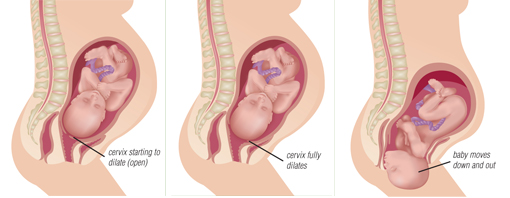
In the hospital your stages of labor and delivery will be measured by pelvic exam to determine how dilated you are. This is a poor measurement of your progression because there is much more going on during labor than simply your cervix opening up.
For example, your baby is getting ready to be born. The hormones being released by both you and your baby as well as the physical stimulation of labor is preparing your baby to take his or her first breaths thru newly formed lungs.
Not only is your baby getting ready, but your body is also preparing for birth. You are releasing hormones so that your pelvis can stretch to accommodate your baby and to prepare your breasts for breastfeeding. You also release hormones so that labor is not too painful.
An experienced midwife or homebirth attendant is much more likely to accurately assess your stages of labor and delivery based on your behavior, physical signs, the length of time between and the intensity of your contractions.
The Best Way to Prepare for Labor
We absolutely encourage you to take a childbirth class so that you develop a deep understanding of the stages of labor and delivery as well as what to do to help yourself during each stage.
Our favorite classes are Bradley Method classes. If you absolutely cannot attend a childbirth class in person, at least sign up for an online childbirth class.
Our favorite online childbirth class is Birth Outside the Box™. These convenient classes provide a wonderful natural childbirth education that highlights your body’s innate ability to give birth. With the class you also receive access to StudyWomb™, an online classroom where you can access audio and written relaxation scripts, birth journals, nutritional guides and sample birth plans
We will talk about a much more accurate way to assess how far along you are, but first an introduction to the stages of labor and delivery:
Stages of Labor and Delivery in Detail
Early Signs of Labor
You may have early signs of labor of labor as early as eight months along. Initially, you may feel a tightening of your abdomen. You may not feel anything, but you will simply notice your stomach is hard, like a watermelon, for a few seconds. Over time this will progress until you feel a bit of cramping during pregnancy and have frequent Braxton Hicks Contractions. For more about early labor signs.
First Stage
During first stage labor your cervix is effacing (getting thinner) and dilating (opening up). First stage labor is considered complete when your cervix is fully dilated and your body switches from opening contractions to expelling contractions.
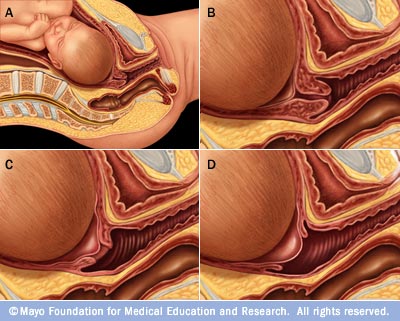
There are three phases to first stage labor. Each has its own physical and emotional signs. Women also have very different needs in each of these phases.
Early Stage of Labor – the majority of your labor will likely be in this stage. Ranging from 8-15 hours, contractions are usually between 30 and 55 seconds long and 5-20 minutes apart.
Active Labor – this stage generally lasts 3-5 hours. Contractions are 60 seconds long and 2-4 minutes apart.
Transition – this is the shortest stage and most intense stage. It marks the complete dilation of your cervix. Typically only 10-60 minutes long, contractions are 70-90 seconds in length. Generally women only have between 5-10 transition contractions. Only 30% of women realize that they are even going thru transition.
Second Stage
Second stage labor, best known as pushing stage, starts after you have complexly dilated. The top of your uterus will now start contracting down towards your cervix to expel your baby.
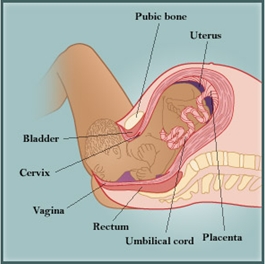
Ranging from 20 minutes to 2 hours long, pushing contractions are around 60 seconds long with 5-10 minute breaks between pushing contractions.
Third Stage
Third Stage labor is the delivery of the placenta. You will likely be too busy marveling over your brand new baby to notice this stage.
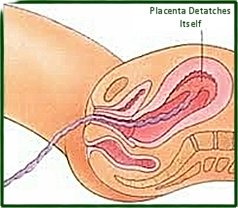
It is best if third stage is not rushed by attendants pulling on the cord. The placenta usually detaches between 20-40 minutes after your baby is born.
For more information about third stage check out
placenta delivery.
How far along are you?
As we mentioned above, pelvic checks are a poor way to assess how far along in the labor stages you are. Pelvic checks only measure dilation, effacement and station. These physical signs just one of the many way to assess how prepared your body really is.
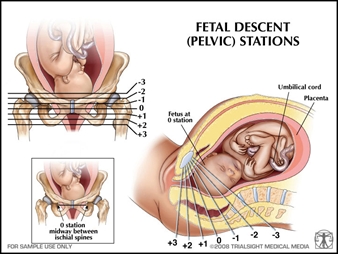
Midwives are less likely to perform pelvic exams because they know that your emotional state, mental state and physical state *in combination* are a much better measure your labor stages. For information about how labor feels from a physical, emotional and mental perspective, click on the hyperlinks in blue above. This will give you in-depth information about each of the labor stages so you can easily assess how far along you are.
Quick Links for more information
Birth Outside the Box™: Online Childbirth Classes
Birth Plan Template
Labor Stages
Early Stage of Labor
Active Labor
Transition
Pushing Stage
Delivery of the Placenta













New! Facebook Comments
Tell us what you think!